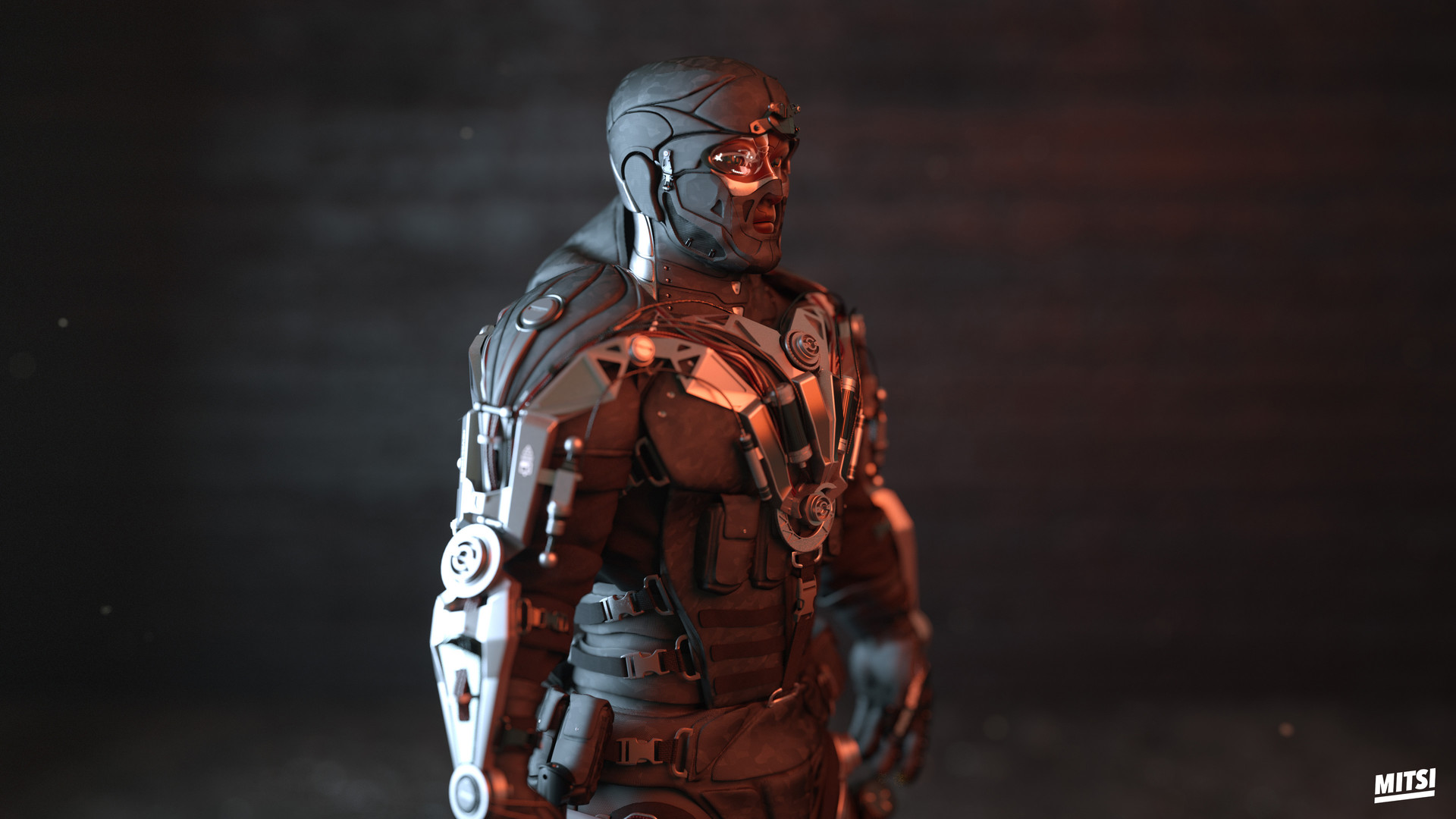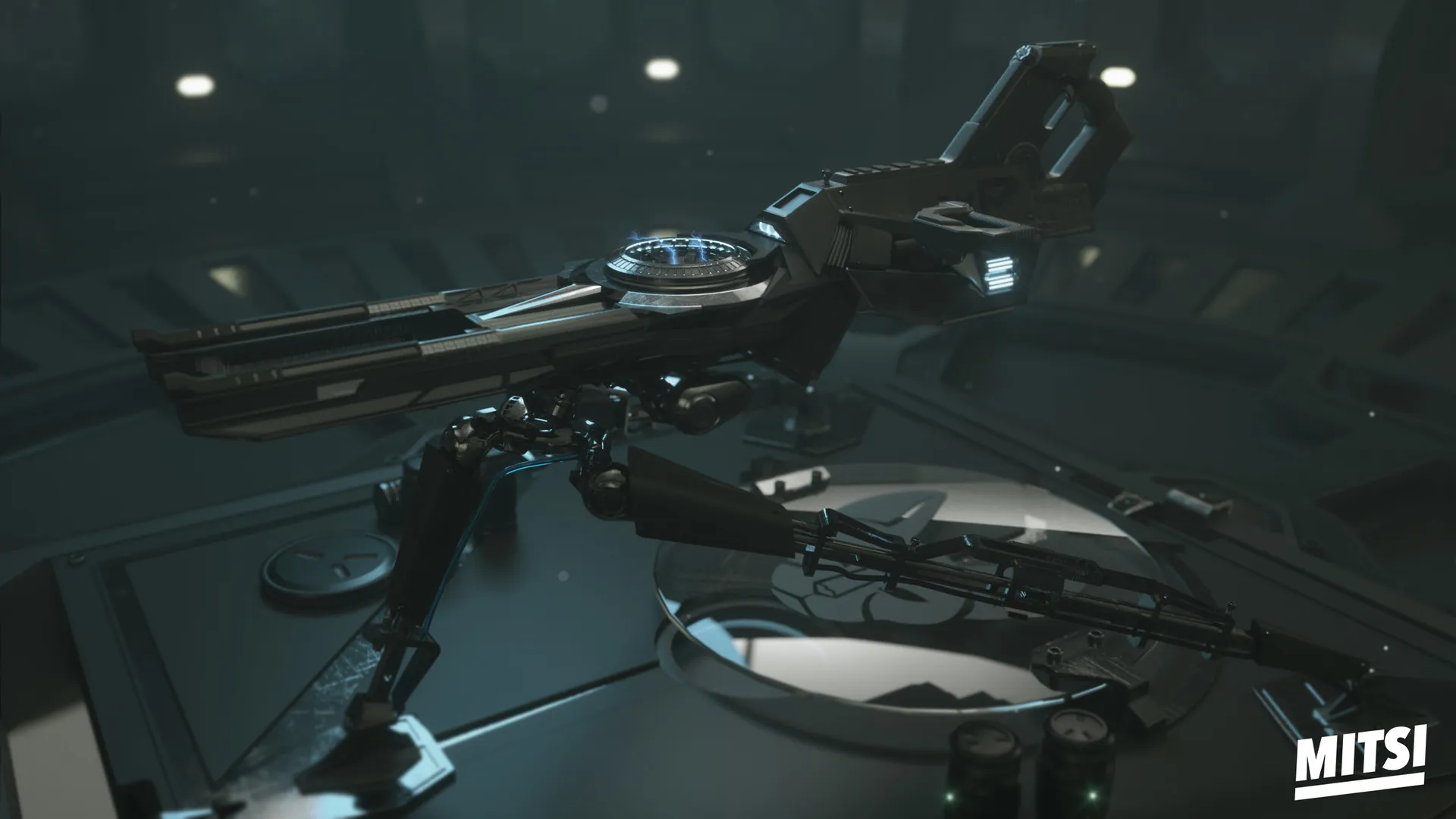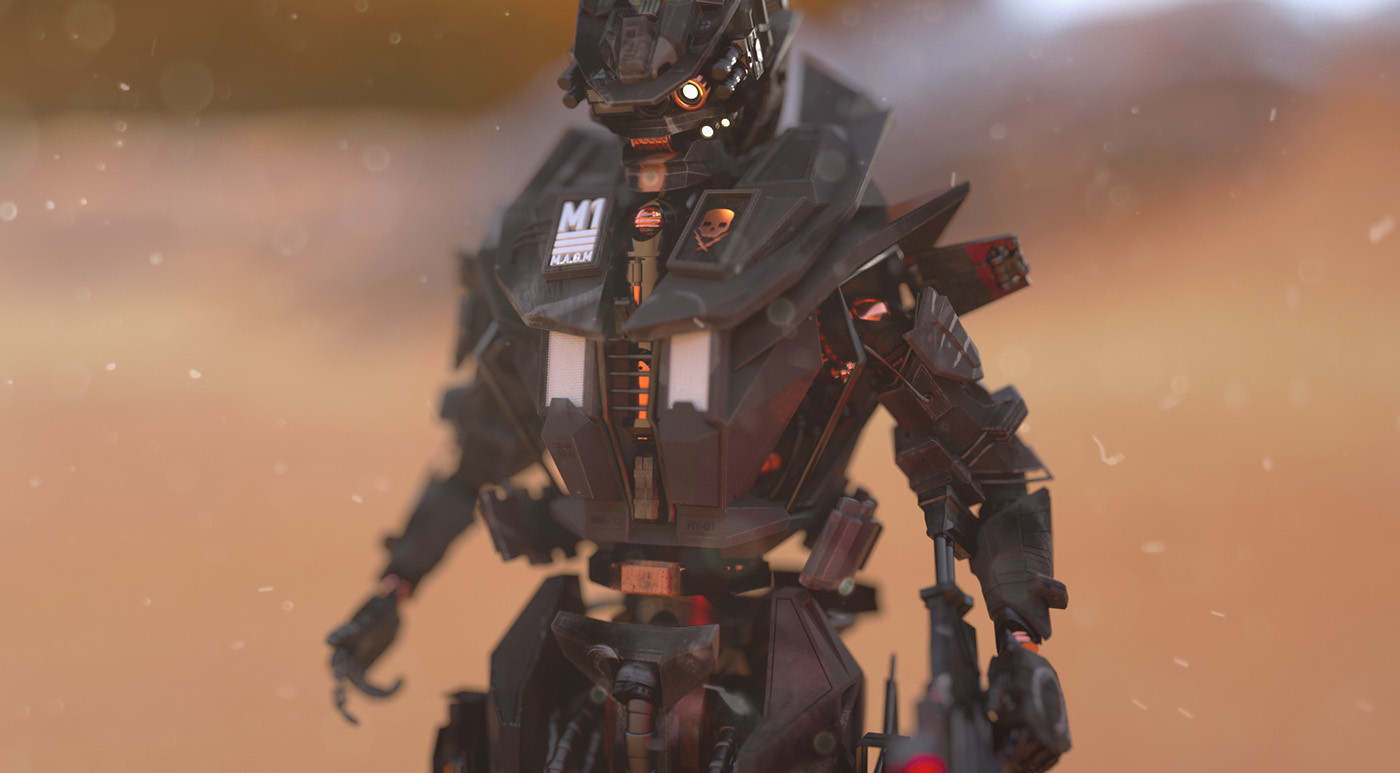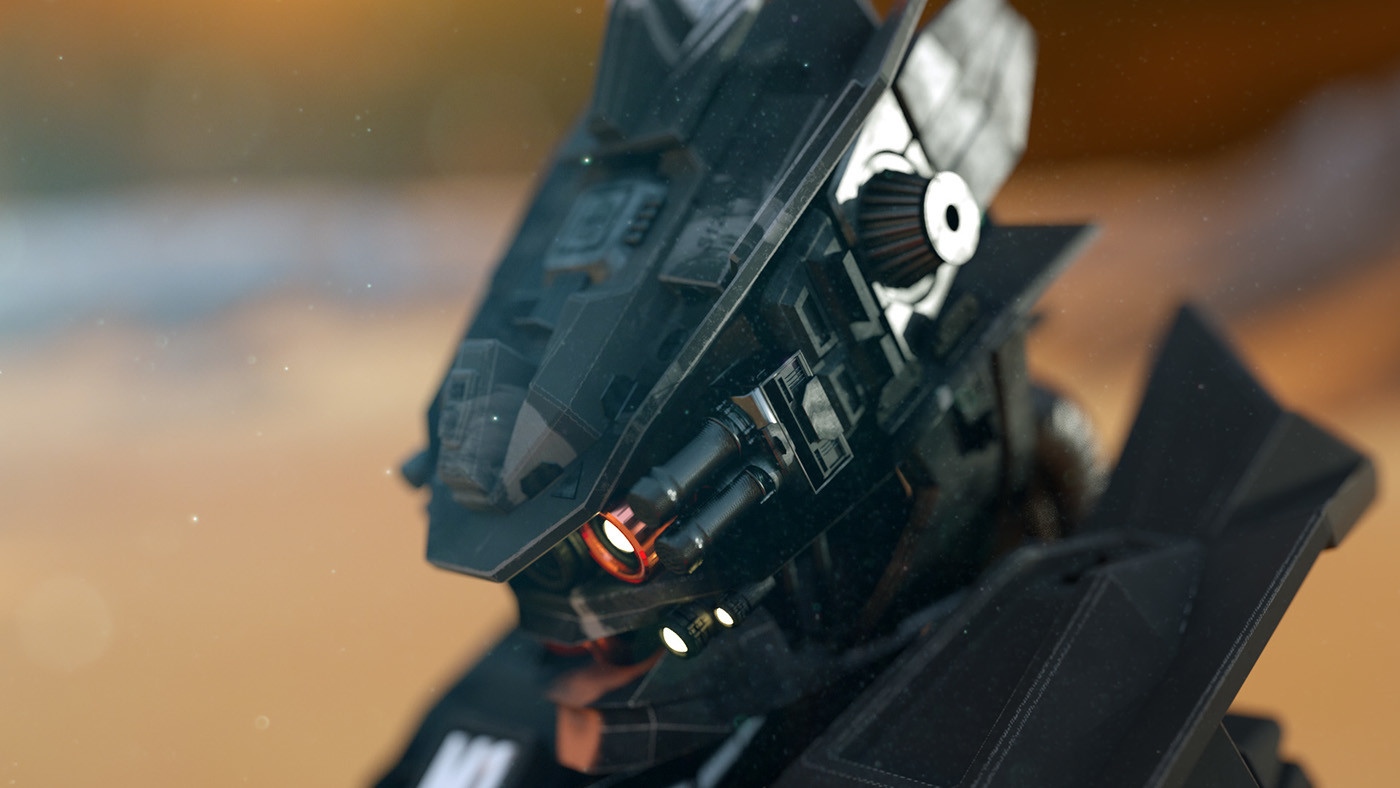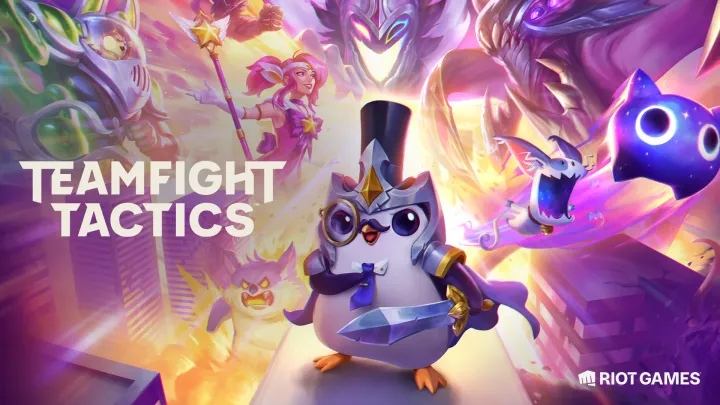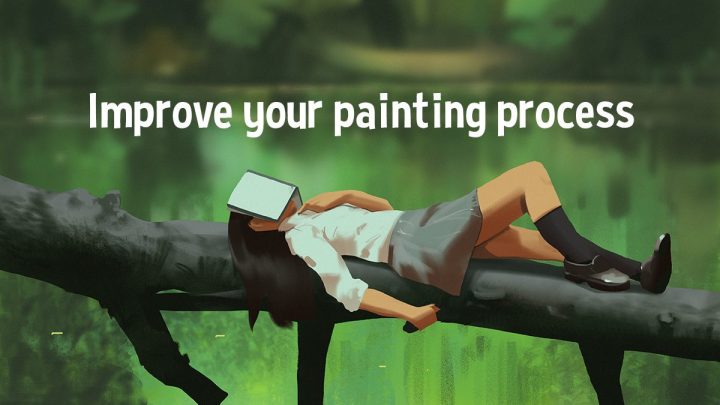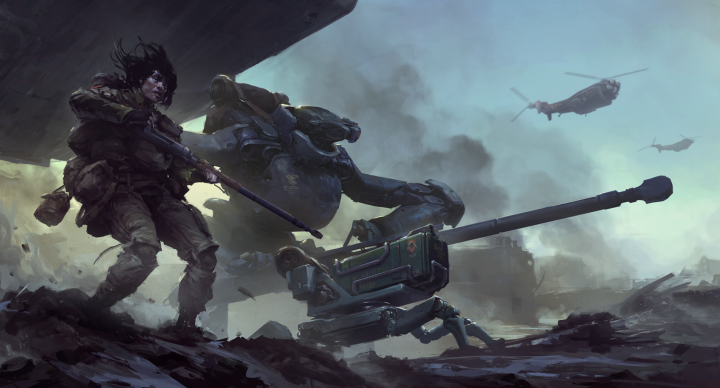Hard Surface Sci-Fi Design in Cinema 4D
Maurice Baltissen is a 3D designer who co-founded Mitsi, a 3D animation studio in the Netherlands, along with his fellow artists Coen Brasser and Thomas Loopstra.
Maurice was kind enough to share with us some of his insights in what it is like working with a team in 3D and why he chooses to utilize Cinema 4D for complex, hard surface design techniques.
Beginning in 3D
When I was a child, I was a pro Lego player, that was the first time I felt the sparkle of creating something.
After my childhood, I started studying Graphic Design in 2008, at the Royal Academy of Art in The Hague, in The Netherlands. As I began experimenting with 3D, I was so amazed by the fact that there are so many ways to visualize something, and that I could create anything.
That is how I started working in Cinema 4D with two of my fellow students; Coen Brasser and Thomas Loopstra, now my creative partners and with whom I’m running our studio called Mitsi.
History of Mitsi
When I was still in Art Academy, people asked me to design something for their companies. Doing something I really like, seeing how professional businesses are using my designs and then getting paid for it was thrilling. I started looking for more and more jobs and the jobs became bigger and bigger. Then I started to collaborate with Thomas and Coen. I hired them as freelancers to help me out and did the same with me. When we graduated, we decided to start a company. The first thing you need is a name. I did my internship in a studio called Buutvrij, in Amsterdam. There was another guy doing his internship and he was about 2 meters tall, big and bald, with the name Mitzi.
We thought Mitzi was a name more suited for a pink leather-wearing chihuahua dog and not for a muscular bald giant from the northern countryside. We made so much fun of it that it grew to be the foundation for our future studio name.
Helpful Tutorials & Learning
I used tutorials for specific things, most of them found on Youtube/Vimeo, and sometimes a course to kick of the knowledge of a new subject. Recently I have been enjoying the classes of Learn Squared. But most of the way I learned 3D was by trial and error. I’ve found that focusing too much on watching tutorials can be counter productive, too. And learning together with my buddies always made sure that someone knows how to fix a particular problem.
Why Cinema 4D for hard surface design over Maya, 3DS Max, or Zbrush?
I got a good and fast workflow modeling and animating in Cinema 4D, so there is no need to jump ship. I do combine it with Substance Painter and Marvelous Designer. Studio wise we collaborate a lot. Thomas loves to add World Machine maps and Turbulence FD sims, and Coen brings more FX and post with Houdini, Fusion, and X-particles.
The EMP is a collaboration between our intern Bas De Smit and me. At the time he was doing his internship at Mitsi, which lasted for six months. Together we built the gun, textured it, and Octane shaders did the final job. So please give Bas a big Yiiihaaaa as well!
What are the benefits that you see in utilizing Octane Render over Keyshot or Marmoset?
I’m a big fan of Octane, it was my first major render engine I got into, and what is remarkably great about it is that the learning curve was super low. So it was easy to get into, and it brings great results!
EMP Project
Did you use custom substance painter materials or grab them from an external source/library?
The Black parts of the scene are standard Octane Materials. And the rest is done in Substance. I have a big library of alpha stamps. Most of them are customized pictures of the internet. And about 40% are created in Photoshop and Illustrator by myself.
Parts & Assets
Almost everything was made fresh, the only parts that are reused assets are the grenades on the floor. They are part of the character model which holds this beast of a gun.
System & Render Time
My system runs with 3x 1070’s. I used Volumetric Boxes in this scene, so that pushed the render time up to around 12 min/frame at 4096 samples.
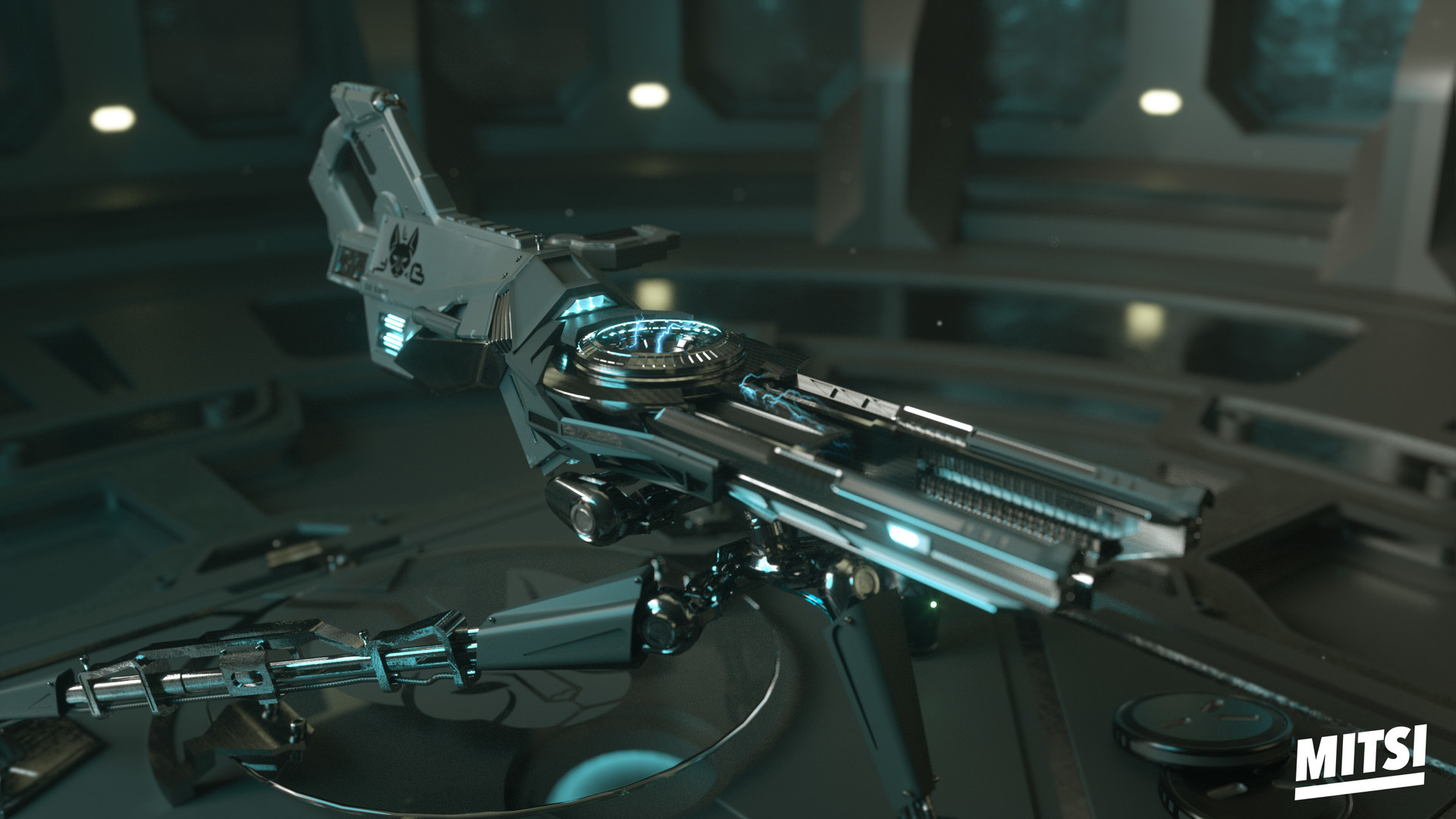 References
References
Reference of the model the gun is a mixture of references I find on sites like Art Station and Pinterest. The designs from the latest Doom and Wolfenstein were quite an inspiration for this project, love how bulky and chunky those designs are, but still readable. From that, I make a mood board in Pureref which is a handy tool and have it open on my third monitor.
Inspiration for the Project
The BFG9000.
The General Workflow for your Soldier and MAGM MECH Projects
The Soldier and M.A.G.M. MECH projects were modeled in Cinema 4D and textured with Octane textures in combination with Substance Painter. I think I have quite a unique workflow. I always had hard times with teachers in the art academy because I don’t really use any storyboards or sketches. And they forced me to, but I’m stubborn and always go my own way. When I have an idea I just start and always work from top to bottom. I start with the head. Design until I love it, with all details and textures, and when I like it I move on to the torso, arms, legs etc.
This only counts for my free work. If I work for a client I have to show them the process, make storyboards, block outs etc. because they want to add their ideas into the design.
Central Advantages and Disadvantages of working in 3D
I think that the sky is the limit when you work in 3D. Everything is possible, but there are so many programs and plugins that it is impossible to become a master in everything. The combination of different skills working together can bring your work to the next level and sharing ideas and creativity is a big plus when you work as a team.
Working with Artists in USA vs. Netherlands
There is a pattern, but for all the work we have done with international clients compared with our work in the Netherlands we see the difference in how people respond professionally is more related to your own attitude, quality of work, experience and so on.
Basically people will take your work more seriously when you become better in creating it and selling it. In that way you will take your own work also more seriously, so I believe those factors way heavier then cultural differences. At least when it comes to the cultural differences between Holland and the U.S.
Inspiration to Create
I get my inspiration from everywhere. I like to travel, so far I have seen 57 countries. It expands your horizon and your way of thinking. I always say, traveling is one of the few things in life that cost money but makes you richer. Every country has a different culture, colors, food, animals etc.
I prefer countries where the culture is far, far away from my Dutch culture. My last trip was to Kyrgyzstan and in October I go to Namibia and Botswana to find some tribes, taste their food and see their colors.
But this isn’t the only inspiration I get. I love playing video games, I look up to Vitaly Bulgarov and the fact that guys like Beeple can create a good looking piece of art for over 10 years everyday. It makes me want to grow more. So I basically spend every hour of my day creating in 3D. And if Elon musk is reading, I would love to create your new spacesuits!

